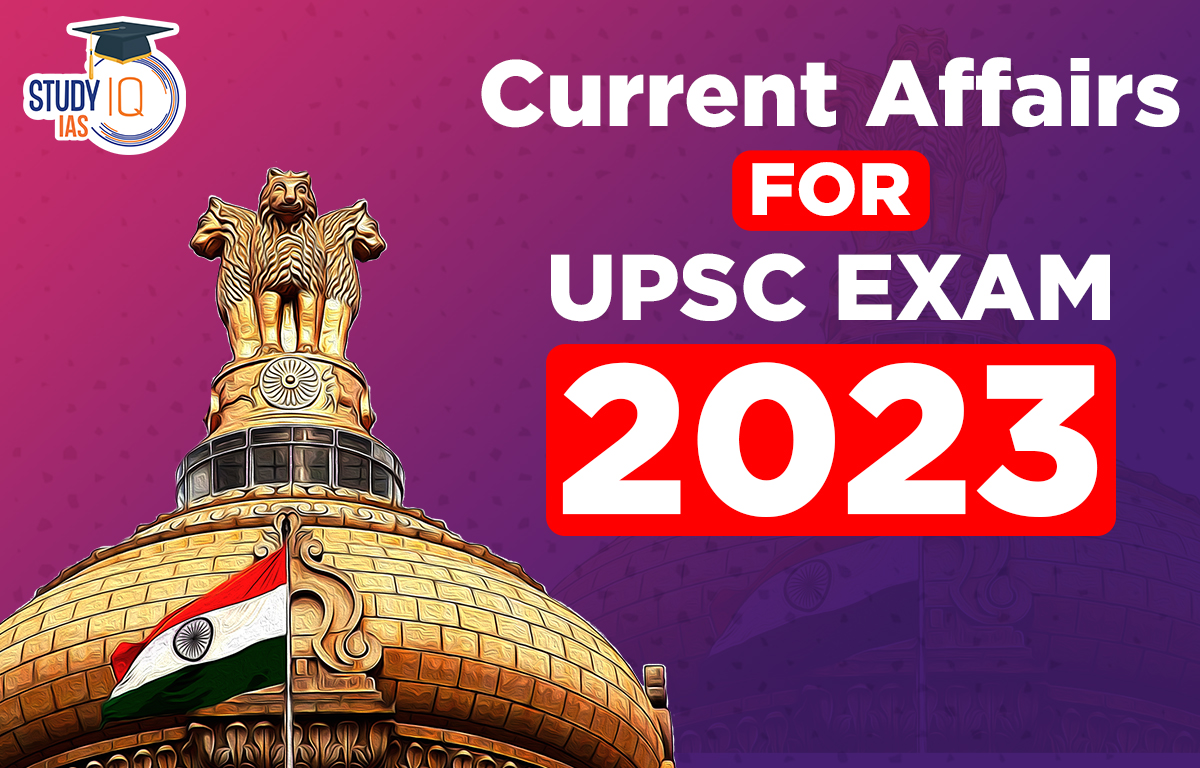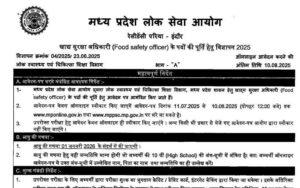Current Affairs 3rd May 2023 for UPSC Prelims Exam
Capital Punishment
Context: The government recently informed the Supreme Court that it is considering the formation of a committee to examine the need for a painless and more dignified alternative to ‘death penalty by hanging’.
What is Capital Punishment?
- Capital punishment, also known as the death penalty, is the execution of a criminal who has been sentenced to death by a court of law for a serious felony.
- It is known as the most severe form of punishment. It serves as punishment for the most heinous, grievous, and abhorrent crimes against humanity.
- India is among the few countries that retains capital punishment under different laws for serious offences.
Crimes punishable by the Death Penalty/Capital Punishment in India
- The Indian Penal Code, 1860: The Indian Penal Code contains several crimes that include the death penalty. They are discussed as follows:
- Waging war against India or attempting to do so under Section 121 of the IPC.
- Abatement of armed rebellion by an officer or member of the army, navy, or air force under Section 132 of the IPC.
- According to Section 194, fabricating evidence is punishable by the death penalty if it is done to obtain a capital conviction for a crime.
- Section 302 of the IPC imposes the death penalty for a person who commits murder.
- Assisting or supporting a minor’s suicide has been associated with the death penalty under Section 305 of the IPC.
- Kidnapping for ransom or other purposes is a serious offence punishable by death under Section 364A of IPC.
- Section 376A specifies the death penalty for rape that results in death or a permanent vegetative state of the victim.
- Under Section 376E, repeat rape offenders may face the death penalty.
- Section 396 also provides for the death penalty in cases of dacoity with murder.
- Sati Prevention Act: Any person involved in the commission of Sati directly or indirectly is subject to the death penalty under The Commission of Sati (Prevention) Act, 1987.
- NDPS Act: Section 31A of the Narcotic Drugs and Psychotropic Substances (NDPS) Act has introduced the death penalty for providing financial support or taking part in the production or sale of narcotics or psychoactive substances in a predetermined amount (e.g., opium 10 kg, cocaine 500 grammes).
- The Scheduled Castes and Scheduled Tribes (Prevention of Atrocities) Act, 1989: Forging evidence that leads to the conviction and execution of an innocent member of a scheduled caste or tribe is punishable by death under the Act.
- Defence forces: Various offences committed by members of the military forces under military laws like the Army Act, 1950; Air Force Act, 1950, and Navy Act, 1957, may also be punishable by death.
Mode of Capital Punishment in India:
- Section 354(5) of the Code of Criminal Procedure (CrPC), 1973 reads “When any person is sentenced to death, the sentence shall direct that he be hanged by the neck till he is dead.”
- Also, the Air Force Act, 1950, The Army Act 1950, and The Navy Act 1957 say that execution must be carried out either by hanging by the neck until death or by being shot to death.
Constitutional validity of Capital Punishment
- The “rarest of rare doctrine” was established by the landmark Bacchan Singh v. State of Punjab (1980), decision, which also mandated the death penalty in certain circumstances.
- By a majority of 4:1, the Supreme Court upheld the constitutionality of the death penalty in this case, but it also established a rule requiring that it only be applied in the most extreme instances.
Recommendation of the Law Commission on death by Hanging
- In its 187th report in 2003, the Law Commission of India recommended that Section 354(5) of the CrPC should be amended by providing an alternative mode of execution of death sentence by “lethal injection until the accused is dead”.
- The report suggested that it should be the discretion of the judge to pass appropriate orders regarding the mode of execution of death sentence.
- It also suggested to hear the convict on the question of mode of execution of death sentence before passing the discretionary order.
Current Affairs 2nd May 2023 for UPSC Prelims Exam
Consensual Divorce and Article 142
Context: The Supreme Court of India has invoked its extraordinary powers under Article 142 of the Constitution to grant divorce by mutual consent to couples trapped in bitter marriages, without making them wait for the mandatory cooling-off period of six to 18 months prescribed by law.
What is Article 142 of the Constitution?
- Article 142 provides discretionary power to the Supreme Court as it states that the SC in the exercise of its jurisdiction may pass such decree or make such order as is necessary for doing complete justice in any cause or matter pending before it.
- While the power available under Article 142 is sweeping, the SC has defined its scope and extent through its judgments.
- The majority opinion in Prem Chand Garg (1962) laid down that “an order to do complete justice…must not only be consistent with the fundamental rights guaranteed by the Constitution, but it cannot even be inconsistent with the substantive provisions of the relevant statutory laws”. The seven-judge Bench in A R Antulay (1988) upheld Prem Chand Garg.
- In the Bhopal gas tragedy case (Union Carbide Corporation vs Union of India, 1991) the SC underlined the wide scope of Article 142(1), which confers power “at an entirely different level and of a different quality”.
- Criticism of Article 142:
- Firstly, the absence of a standard definition for the term “complete justice” under Article 142 allows the possibility of its arbitrary exercise or misuse.
- Secondly, another criticism of the powers under Article 142 is that unlike the legislature and the executive, the judiciary cannot be held accountable for its actions.
- The power has been criticized on grounds of the separation of powers doctrine, which says that the judiciary should not venture into areas of lawmaking and that it would invite the possibility of judicial overreach.
What is Consensual Divorce?
- Consensual divorce is a type of divorce that is based on the mutual agreement of both spouses to end their marriage legally and peacefully.
- It is the shortest, least expensive and least harmful way of a divorce, as it avoids prolonged litigation, bitter disputes and emotional trauma.
- It also benefits the children of the divorcing couple, as it reduces their exposure to parental conflict and helps them cope with the transition.
Consensual Divorce Law in India
- In India, consensual divorce can be obtained under two laws: the Hindu Marriage Act 1955 and the Special Marriage Act 1954.
- Both these laws provide for a mutual consent divorce, where the spouses have to file a joint petition in the court and satisfy the following conditions:
- They have been living separately for at least one year.
- They have not been able to live together and have mutually agreed to dissolve their marriage.
- They have settled all their issues regarding alimony, custody, maintenance, etc.
- They have given their consent voluntarily and without any coercion or undue influence.
- The court will verify the consent of the parties and try to reconcile them. If the court is satisfied that the conditions are met and there is no possibility of reconciliation, it will grant a decree of divorce by mutual consent.
Purchasing Managers’ Index (PMI)
Context: India’s manufacturing PMI (Purchasing Managers’ Index) has risen to a four-month in April 2023.
Recent Trend: Manufacturing activities in India have accelerated as Manufacturing PMI increased from 56.4 (March 2023) to 57.2 (April 2023). It has been boosted by robust new business growth, mild price pressures, better international sales, and improving supply-chain conditions.
What is PMI (Purchasing Managers’ Index)?
- It is an index of the prevailing direction of economic trends in the manufacturing and service sectors which is derived after monthly surveys of different companies.
- There are two types of PMI -Manufacturing PMI and Services PMI. A combined index is also made using both manufacturing PMI and services PMI.
- Purchasing Managers Index (PMI) is released and compiled by the Institute for Supply and Management (ISM) every month based on the survey that is conducted monthly and is sent to the senior executives of over 400 companies
How does PMI Work?
- It includes 5 survey areas namely – Production levels, New orders, Supplier Deliveries, Inventories, and Employment levels. All these 5 surveys are weighted equally by the ISM, The range of PMI lies between zero and a hundred, it is analyzed by comparing its value to the previous month’s PMI value where-
- PMI < 50, represents the expansion in the economy,
- PMI > 50 represents contraction in the economy
- PMI = 50 represents there has been no change.
Significance of Purchasing Managers Index:
- Offers a Reliable Expectation of the Economy
- The PMI is one of the most closely watched measures of business activity globally.
- It gives a trustworthy indication of how well a manufacturing sector in particular and the economy as a whole is performing.
- Economic Activity Indicator
- When compared to competitive economies, an economy’s attractiveness is improved by a positive PMI reading. Suppliers may set prices in response to changes in the PMI.
- Academics, investors, business people, traders, and financial experts regularly monitor it as a reliable indicator of economic boom-and-bust cycles.
- Since it is released at the start of every month, PMI is also viewed as a leading indicator of economic activity.
- Helps in Decision Making
- Central banks set interest rates based on the PMI. Releases of the PMI have an effect on the bond and currency markets in addition to the equities market.
Aurora
Context: Recently, for the first time, an aurora was captured on camera in Ladakh, India.
- Aurora was captured on the night of April 22-23 after a coronal mass ejection was hurtled from the Sun on April 21.
- Indian Astronomical Observatory (IAO) above Mount Saraswati in Hanle, Ladakh captured the Aurora, which is triggered by an interaction between the plasma particles hurled by the Sun and Earth’s magnetic field.
About Aurora
- Aurora or Northern Lights and Southern Lights are a natural light display that occurs in the polar regions.
- Polar lights are a fascinating natural phenomenon that results from the interaction between the sun, the Earth’s magnetic field, and our atmosphere.
- They are caused by particles from the sun that enter the Earth’s atmosphere and collide with gas particles, such as oxygen and nitrogen.
- When these particles collide, they release energy in the form of light. The different colours of the aurora are produced by different gases.
- For example, green auroras are caused by oxygen molecules, while red auroras are caused by high-altitude oxygen atoms.
- Reason For Polar lights are more visible in the polar region: Earth’s magnetic field traps these particles near the poles, causing them to interact with the atmosphere and produce a beautiful display of light.
- The strength and frequency of the lights depend on the activity of the sun. When the sun is more active, it releases more particles, which can result in more frequent and intense auroras.
- Recent Aurora lights were seen due to an intense geomagnetic storm that hit the Earth.
- A geomagnetic storm is a disturbance in Earth’s magnetic field caused by the arrival of a CME’s charged particles.
- When these particles interact with Earth’s magnetic field, they can cause all sorts of electrical and magnetic disruptions.
- Every 11 years, the Sun’s magnetic cycle ramps into overdrive.
- At the height of this cycle, known as solar maximum, the Sun’s magnetic poles flip.
- This produces a greater number of sunspots, more energy and cause solar eruptions of particles.
- This activity on the sun – a solar storm or coronal mass ejection – causes the auroras.
- And this process increases and is more visible when the Sun goes through this natural, 11-year cycle.

Solar Storms
- They are disturbances in the Sun’s magnetic field that can release large amounts of energy into space in the form of charged particles and electromagnetic radiation.
- The most common types of solar storms include solar flares, coronal mass ejections (CMEs), and high-speed solar wind streams.
- Effects of solar storms on the Earth
- Power outages: Strong solar storms can cause power grid disturbances by inducing electrical currents in long power lines, which can lead to blackouts and other electrical disruptions.
- Satellite and communication disruptions: Solar storms can interfere with satellite communication and navigation systems, causing disruptions to GPS, satellite TV, and other services.
- Radiation exposure: Solar storms can increase radiation levels in space, which can pose a risk to astronauts and people at high altitudes.
- Increased risk of space debris: During a solar storm, the Earth’s atmosphere can expand, which can increase drag on orbiting satellites and space debris, leading to a higher risk of collisions with other objects in orbit.
Cantonment
Context: Recently, central government has decided to dissolve all 62 army cantonment boards in the country thereby discontinuing the colonial era cantonment system.
- Khasyol Cantonment Board (KCB) in Dharamshala has become the first cantonment in the country to have its civilian area separated and removed from Army control.
About Cantonment
- A cantonment board is an administrative civic body that operates under the regulation of the Ministry of Defense in India.
- They are deemed municipalities and running municipalities is a state subject.
- They are governed by Cantonment Boards through the Defence Estates Department of the Ministry of Defence.
- Affairs related to the cantonments, including construction of new buildings, height of building, commercial conversion, sewage and rest were all controlled by the Cantonment Board.
- Category of Cantonment Board
- Category I contains above 50,000 populations.
- Category II comprises 10,000 to 50,000 populations of civilians.
- Category III generally contains 2,500 to 10,000 populations.
- Category IV contains populations below 2,500.
- At the time of Independence there were 56 cantonments and 6 more were notified after 1947, the last one being Ajmer in 1962.
Rational for Abolishing Cantonment
- To decolonize the entire system of cantonment board system which was prevalent under British rule in India.
- To carve out the military areas in all cantonments and convert them into “exclusive military stations” with the Army exercising “absolute control” over them.
- Currently, Civilian residents of cantonments are not benefited from state welfare schemes.
- The civilian areas will be merged with the local municipalities, which will be responsible for their maintenance among other things.

Dengue
Context: Recently, researchers at the Indian Institute of Science (IISc) have found that dengue virus has evolved dramatically over the last few decades in the Indian subcontinent.
About Dengue Virus
- Dengue is a mosquito-borne tropical disease caused by the dengue virus (Genus Flavivirus), transmitted by several species of female mosquito within the genus Aedes, principally Aedes aegypti.
- Dengue virus belongs to the family Flaviviridae, having four serotypes dengue virus (DENV):
- DENV-1
- DENV-2
- DENV-3
- DENV-4
- Dengue cannot be spread directly from person to person.
- However, a person infected and suffering from dengue fever can infect other mosquitoes.
- Although it usually results in mild illness, severe dengue infections can sometimes prove fatal.
- In recent years, Dengue 2 has become more dominant across India, while Dengue 4—once considered the least infectious—is now making a niche for itself in South India
- Treatment: There are no approved vaccines against dengue in India, although some vaccines have been developed in other countries.
- Dengvaxia: It was approved by the US Food & Drug Administration in 2019, the first dengue vaccine to get the regulatory nod in the US.

Bluebugging
Context: Recently, Andhra Pradesh district Superintendent of Police has asked the people to be wary of “bluebugging.”
About Bluebugging
- It is a form of hacking that lets attackers access a device through its discoverable Bluetooth connection.
- Once a device or phone is bluebugged, a hacker can listen to the calls, read and send messages and steal and modify contacts.

How does bluebugging hack devices?
- Several smartphones have their Bluetooth settings on discovery mode as it is a default setting, making it easy for hackers to access the phones when they are within 10 metres from the device.
- Once a connection is established, hackers can use brute force attacks to bypass authentication.
- They can install malware in the compromised device to gain unauthorised access to it.
How to prevent Bluebugging?
- Turning off Bluetooth and disconnecting paired Bluetooth devices when not in use.
- Updating the device’s system software to the latest version.
- Limiting the use of public Wi-Fi.
- Using VPN as an additional security measure.
- Modern anti-virus softwares can also help thwart such attacks.

CU-Chayan Portal
Context: Recently, The University Grants Commission (UGC) has launched CU-Chayan, a unified faculty recruitment portal for Central Universities.
About CU-Chayan Portal
- CU-Chayan portal is a completely user-friendly portal and caters to the needs of all the stakeholders in the recruitment process.
- The portal provides a common platform for listing vacancies/advertisements/jobs across all Central Universities.
- The portal makes the recruitment process completely online starting from application to screening with alerts to all the users of the portal.
- The applicant can also search for jobs using various filters like the name of the university, location, designation, category, subject, type of employment, experience and education level.
- UGC will also provide training to CUs in using this portal.
- From now onwards, for all recruitments, applicants have to apply only on the CU-Chayan portal.
University Grants Commission of India (UGC India):
- UGC India is a statutory body set up by the Indian Union government in accordance with the UGC Act,1956 under the Ministry of Human Resource Development.
- It is charged with coordination, determination and maintenance of standards of higher education.
- UGC also provides recognition to universities in India and disburses funds to such recognised universities and colleges.
- In 2018, the Ministry of Human Resource Development (HRD) (Now Ministry of Education) has prepared a draft bill to repeal the apex body University Grants Commission (UGC).
- The bill is named as Higher Education Commission of India (Repeal of University Grants Commission Act) Bill 2018. It provides for setting up of Higher Education Commission of India in place for UGC.
- Head office: New Delhi.
- Additional 6 regional offices: Guwahati, Kolkata, Hyderabad, Pune, Bengaluru, and Bhopal.


 TALASH Initiative: Objective, Key Featur...
TALASH Initiative: Objective, Key Featur...
 Custodial Deaths in India, Types, Issues...
Custodial Deaths in India, Types, Issues...
 MPPSC FSO Recruitment Notification 2025 ...
MPPSC FSO Recruitment Notification 2025 ...





















